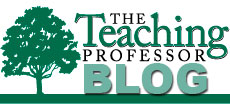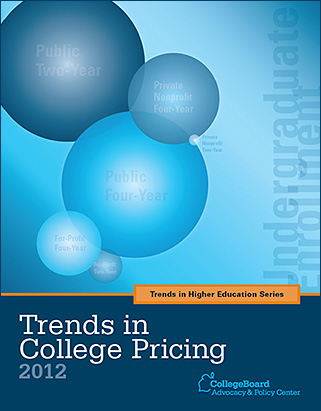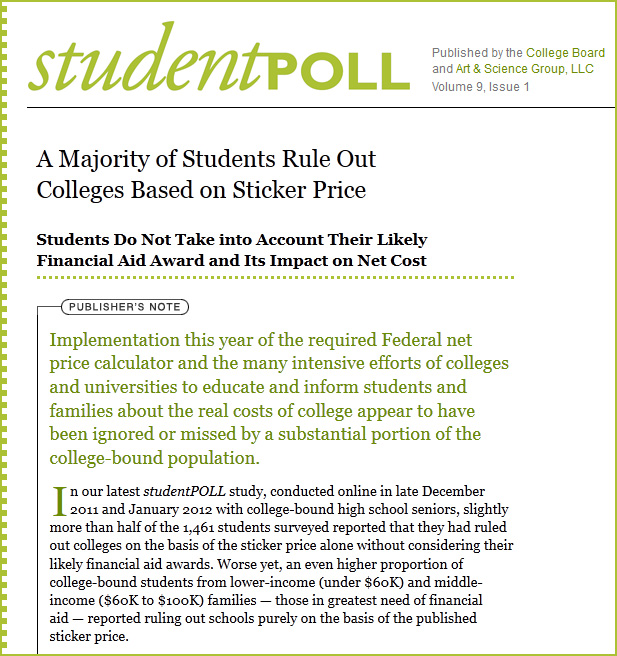The article, “Technology changing how students learn, teachers say,” reminds me of the graphic below. It appears that teachers now have a definite answer to the question I was asking back in June 2010:
.

Excerpt (emphasis DSC):
Teachers who were not involved in the surveys echoed their findings in interviews, saying they felt they had to work harder to capture and hold students’ attention.
“I’m an entertainer. I have to do a song and dance to capture their attention,” said Hope Molina-Porter, 37, an English teacher at Troy High School in Fullerton, Calif., who has taught for 14 years. She teaches accelerated students, but has noted a marked decline in the depth and analysis of their written work.
Bottom line:
Like so much in life, we have very little control of most things. Students are changing and we cannot control that situation — nor should we seek to. Why? Because most people I know — including myself — do not like to be controlled. We can and should attempt to pulse check these sorts of changes, plan some experiments around them, and then see and report on what works and what doesn’t work. This all relates to something I saw on earlier today on Twitter from Anya Kamenetz (@anya1anya):
If you declare a no-media classroom, you better be damn fascinating.
Also, a relevant quote:
The biggest problem area for teachers is students’ attention span, with 71% saying saying entertainment media use has hurt students either “a lot” (34%) or “somewhat” (37%) in that area.
— from Children, Teens, and Entertainment Media: The View From The Classroom
A Common Sense Media Research Study – NEW REPORT
November 1, 2012
Download the full report
Why is American Higher Education so averse to change? — from Jeff Selingo
Excerpt:
In my 15 years of reporting on higher education—and especially in the last year as I have reported for my forthcoming book on the future of higher education—colleges and universities have come to remind me of other American content industries that have been disrupted in the last decade: newspapers and magazines, music, and book publishing. In many ways, colleges and universities are following the same playbook:
From DSC:
I hope that higher education learns from what the Internet did to other industries. I hope we can reinvent ourselves, stay relevant, and ride the wave to create WIN-WIN situations…and not get crushed by it.
Blogs: vastly underused teaching and learning tool — from Donald Clarke
Excerpt:
Blogs are a potent and vastly underused teaching and learning tool. The habit of regular writing as a method of reflection, synthesis, argument and reinforcement is suited to the learning process. Blogs encourage bolder, independent, critical thinking, as opposed to mere note taking. For teachers they crystallise and amplify what you have to teach. For learners, they force you to really learn.
My notes from Thursday, 10/11/12 Sloan-C presentation by Hayley Lake & Patrick Lordan from Eastern Washington University, US
The discussion board audit: How will I know what I think until I see what I say
Discussion boards / forums are great for:
- Reading and using research to support viewpoints/perspectives
- Writing
- Deeper reflections
- Communications
- Need to get point across succinctly
- Decide what’s important
- Tailor language to audience
- Be professional
- Critical thinking
- Student-to-student interactions – students can generate their own online community
- Time management and study skills
- Can be relevant to real world and draw upon students’ experiences
- Bringing out the wall-flowers – they can come alive and really contribute in this manner
- Thinking more meta-cognitively and growing in self-awareness
(Bearing in mind a class size of 24-30 students per class)
Except for first two weeks, did not answer each posting; instead, typically the professor looked for themes and provided a weekly recap. Straightened out any wrong understandings.
Characteristics of reflective learners
- Curious
- Open to criticism and different approaches
- Honest
- Motivated to improve
Used the idea of a Discussion board audit
- For closure
- For summative assessment
- For deeper learning/reflection; richness, depth, self-evaluation
- Based off Mark Samples’ (George Mason University) blog audit
- Re-read all DB postings, mark them up, analyze own work; look for themes and ideas worth revisiting, assess own learning
- Really helped students see how they had learned, changed, grown
Another discussion board related presentation was:
Cleaning Out the Crickets: Enhancing Faculty Presence in Online Instruction
John J. Oprandy, Ph.D., South University, College of Nursing and Public Health, Health Sciences Program Online; Savannah, GA, US
- John presented an alternative approach to discussion board questions and assignments aimed at helping students think critically
- Discussed the merits of this approach and how to execute it
- DB’s targeted as one of the most important ways to teach a student online
- In their model:
- Professor:
- Sets expectations up front on when going to respond and how going to respond – i.e. NOT going to respond to each person’s every posting
- Responds to each student’s main post; students respond to 2 other students
- Use open ended, carefully crafted questions; questions need to be more complex in nature
- Offers substantive responses, leads/guides discussion, models good writing, offers timely responses
- Summarizes info and adds something new
- Asks probing follow up questions to guide the conversations/learning – “It’s like putting pieces of a puzzle together.”
- Provides final wrap up
- Professor:
- What NOT to do:
- Provide short/trite responses, give away the answer, give feedback that better belongs in the gradebook
- This approach requires daily interaction and participation
- Rubrics important and must align with approach
- Works best with smaller groups
- Faculty liked it because they often had to think on their feet
First university system joins edX — from by Tanya Roscorla
Excerpt:
Huge online courses will be coming to the University of Texas System next year, the system announced Monday, Oct. 15.
Who’s investing in ed-tech?: Tech investors and their education portfolios — from hackeducation.com by Audrey Watters
Excerpt:
Below is by no means a complete list of technology investors who have education companies in their portfolio. Nor is it a list of the “top” or the “best” or the “most profitable” or “most active” ones, although for what it’s worth the list does match closely the answer on Quora to “Who are the top (active) VCs in the education technology space?”
.
Student loan default rates jump — from money.cnn.com by Blake Ellis
The Department of Education said 218 schools had three-year default rates of 30% or more, putting the schools at risk of losing their federal student aid.
Excerpt:
NEW YORK (CNNMoney) — Borrowers are having a harder time repaying their student loans.
The percentage of borrowers who defaulted on their federal student loans within two years of their first payment jumped to 9.1% in fiscal year 2011, up from 8.8% the previous year, according to U.S. Department of Education data released Friday.
Too high a price? — from InsideHigherEd.com by Kevin Kiley
Excerpt:
Grinnell College, which this year reported the fifth-largest endowment of any liberal arts college, announced Thursday that it would spend the next few months engaged in a conversation with campus stakeholders about changing its financial aid policies – including potentially, but probably not, going as far as making changes to need-blind admission. That makes it the second high-profile liberal arts college, following Wesleyan University this summer, to broach the topic in recent months.
Grinnell’s announcement stands out for two major reasons. Grinnell is one of the wealthiest liberal arts colleges in the country, so the idea that it would view its current financial aid model as unsustainable could be a bellwether that the sector as a whole is reconsidering the model. Second, the college’s administrators are taking an unusually public approach to a discussion that arouses strong emotions, trying to educate all campus constituents on why they think change might be necessary and hoping that, in doing so, they can mollify potential critics.
Addendums/also see:
- White House: FY 2012 Deficit $1.089 Trillion — from finance.yahoo.com
- Higher Ed Shrinks — from InsideHigherEd.com by Doug Lederman
-
Let’s make a deal— from InsideHigherEd.com by Kevin Kiley
-
What’s driving debt — from InsideHigherEd.com by Kevin Kiley
Excerpt:
In a new paper released by the Cornell Higher Education Research Institute, University of Richmond business professor James Monks finds that when it comes to getting burdened by debt, the increase in price isn’t an innocent bystander, but it has several accomplices, particularly the admissions and financial aid policies at a given institution. -
Pearson doubles down online — from InsideHigherEd.com by Doug Lederman
-
Apollo Group to close 25 University of Phoenix campuses — from bizjournals.com
Excerpt:
The majority of its 328,400 students take classes online, which means those campuses aren’t in demand, said Alex Clark, spokesman for the Phoenix-based Apollo (Nasdaq: APOL). Plans call for closing 115 locations, impacting 13,000 students. Of those, 90 are learning centers and 25 are campuses. Following the closure, 112 locations in 36 states will remain.
Excerpt:
When we take notes during a lecture, however, something amazing happens. As we write, we create spatial relationships between the pieces of information we’re recording. The region of the brain that handles spatial information is engaged and, by linking it with the verbal information the brain filters wheat from chaff.
Research bears this out. In a study of a lecture class, students who took notes remembered no more content than the students who didn’t take notes; the act of taking notes did not increase the amount of what they remembered. But the students who took notes remembered more key facts, those who merely listened remembered more or less random content from the lecture.
…
Note taking isn’t the only way to help the brain recall important stuff. Other kinds of writing, such as scrawling ideas on a whiteboard or pencilling a reminder on a calendar, create a link between the spatial and verbal parts of our brains and strengthen how important information is stored in our brains.
Your view: If you could change one thing about higher education… — from The Globe and Mail

Last year, venture firm Kleiner Perkins debuted its plans for a summer internship program to place top engineering talent from colleges at the firm’s portfolio companies. The benefit is two-fold: students get to work at the startup level and are mentored (and have the prestige of Kleiner Perkins on their resume), and startups get access to young engineering talent. After a successful inaugural program this summer, the venture firm is now accepting applications for the 2013 class.
The future of education, according to McGraw-Hill — from edcetera.com by Kirsten Winkler
Excerpt:
Certainly, there needed to be a set of skills defined to call a student college-ready, but the path of how to achieve these fixed goals should be an individual one that allows students to go after their interests and respects their individual talents. Students shouldn’t be in the same grade when they’re not on the same level. What we’re talking about is a flexible system that would depend on when a student is ready rather than when a curriculum defines they’re ready.
Such a more flexible model is inspired by some of the things that are happening in higher education already. This is a great example of how innovation taken from higher ed is making its way into high schools.
Vinet Madan used a nice metaphor when he explained this approach in our interview. It’s like the decision to take either the scenic route by the coast or the highway to get to your goal. Ultimately, both routes will take you to the destination, it’s just a personal preference.
Also see:
- McGraw-Hill exec: tech will make us rethink age-grouping in schools — from gigaom.com by Ki Mae Heussner
Other ways to tell a student they’re wrong without using the word “wrong” — from future.teacherleaders.org by Jose Vilson
Excerpt:
- “How did you get that?”
- “Let’s try a different approach.”
- “You’re getting there.”
- “This needs work.”
From DSC:
Nice work Jose. I like these. If a teacher told me these things, I would be encouraged…not discouraged. School would become a source of strength and hope, not pain.
Students think they can multitask. Here’s proof they can’t. — from Faculty Focus by Maryellen Weimer
.

Excerpt:
With easy access to all sorts of technology, students multitask. So do lots of us for that matter. But students are way too convinced that multitasking is a great way to work. They think they can do two or three tasks simultaneously and not compromise the quality of what they produce. Research says that about 5% of us multitask effectively. Proof of the negative effects of multitasking in learning environments is now coming from a variety of studies.
The question is, how do we get students to stop? We can tell them they shouldn’t. We can include policies that aim to prevent it and devote time and energy trying to implement them. I wonder if it isn’t smarter to confront students with the facts. Not admonitions, but concrete evidence that multitasking compromises their efforts to learn. The specifics are persuasive and here are some examples to share with students.
From DSC:
If you can’t beat ’em, join em! 🙂 I vote for having students use such devices in achieving the same learning outcomes/objectives that you normally would like the students to cover. That is, to integrate the technologies that they are so engaged with — if possible. But I like Maryellen’s thought about just confronting them with the facts — that if they choose to “multitask,” they will significantly reduce their ROI that they’re making in their education.
From DSC (with a thanks going out to Academic Impressions for the find/email on this):
I’ll bet many people don’t know that they would ultimately not pay the published “sticker price” for a degree. But how do we expect people who don’t eat and breathe this stuff to know that?!? It’s confusing enough for many of us who work within higher education!
Why do you have to be a financial aid wizard or a grants/scholarship researcher extraordinaire in order to understand what you will actually be paying in order to get your degree?
How students can create their own e-textbooks on an iPad — from edudemic.com
Excerpt (emphasis DSC):
In July, Greg Kulowiec and I taught a workshop on Creating Digital Course Content. One of our participants, a high school math teacher, initially set out to create his own textbook. However, as we started exploring BookCreator, he realized that the real value may be in the students creating their own collection of books over the course of the year.
From DSC:
I like this idea of giving students more tools to create their own content.
When talking to an ed tech contact from Ohio at this summer’s Moodlemoot, he mentioned that in his 20 districts, there’s a new paradigm now — students are creating the content.
Perhaps this is the answer to the oft-asked question, “WHO will create and maintain the content?”
- Publishers?
- Teams of specialists within a school district, college, or university?
- Teachers and faculty members?
- Or will it be the students themselves, guided by their teachers and faculty members?












